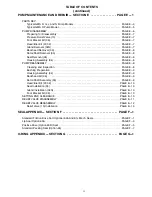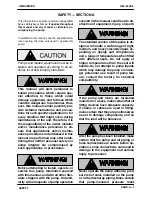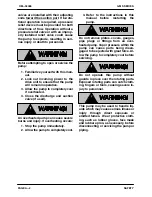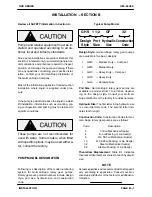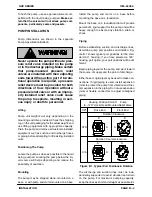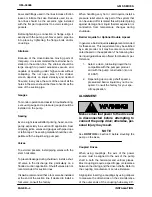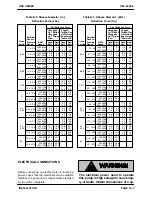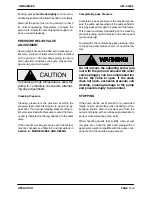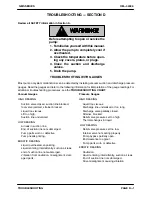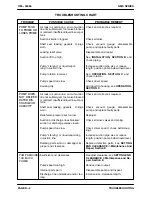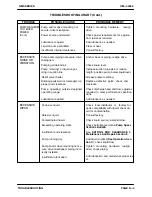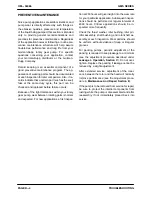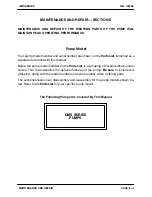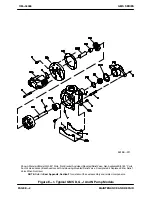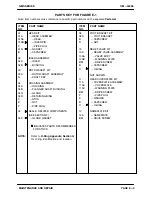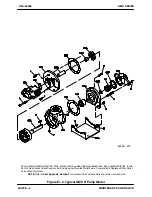
GMS SERIES
OM-04386
PAGE B-4
INSTALLATION
bows and fittings used in the lines increase friction
losses; minimize their use. Reducers used in suc
tion lines should be the eccentric type installed
with the flat part uppermost to avoid creating air
pockets.
Before tightening a connection or flange, align it
exactly with the pump port. Never pull a pipe line
into place by tightening the flange bolts and/or
couplings.
Strainers
Because of the close‐tolerance moving parts of
this pump, it is recommended that a strainer be in
stalled in the suction line. The strainer should be
large enough to prevent excessive vacuum, and
capable of operating under high vacuum without
collapsing. The net open area of the strainer
screen depends on liquid viscosity and desired
flow rate; in any case, the sum of the area of all the
holes in the screen should be three to five times the
area of the suction pipe.
Gauges
To monitor operation and assist in troubleshooting,
a vacuum gauge and a pressure gauge should be
installed on the pump.
Sealing
Even a slight leak will affect priming, head, and ca
pacity, especially in a suction lift application. Seal
all piping joints, valves and gauges with pipe dope
or teflon tape. The sealing material should be com
patible with the liquid being pumped.
Valves
To avoid air pockets, install piping valves with the
stem horizontal.
To prevent leakage during shutdown, install a shut
off valve in the discharge line, particularly on a
flooded suction application. Shutoff valves are not
recommended for suction lines.
It is
not
recommended that a foot valve be installed
at the end of the suction line. If desired to install a
foot valve, consult the factory.
When handling very hot or cold liquids, install a
pressure relief valve in any part of the system that
can be valved off or isolated; this will protect piping
against damage from liquid thermal expansion or
contraction from temperature changes during
shutdown.
Barrier Liquids for Optional Double Lipseal
In general, a barrier liquid is
always
recommended
for these seals. This requirement may be satisfied
by a simple oiler, or it may become more compli
cated based on the application. The following bar
rier liquid guidelines are offered for maximum per
formance;
1.
Select a clean, lubricating liquid that is
compatible with the pumped product
and with the pump construction (iron or
316 SST).
2.
Depending upon pump shaft speed, a
pressurized barrier liquid may not be re
quired. Consult the factory for your spe
cific application.
ALIGNMENT
Make certain that power to the drive unit
is disconnected before attempting to
connect the pump drive; otherwise, per
sonal injury may result.
NOTE
See
ROTATION
in Section C before mounting the
pump on the base.
Coupled Drives
When using couplings, the axis of the power
source must be aligned to the axis of the pump
shaft in both the horizontal and vertical planes.
Most couplings require a specific gap or clearance
between the driving and the driven shafts. Refer to
the coupling manufacturer's service literature.
Align spider insert type couplings by using calipers
to measure the dimensions on the circumference
of the outer ends of the coupling hub every 90
.




